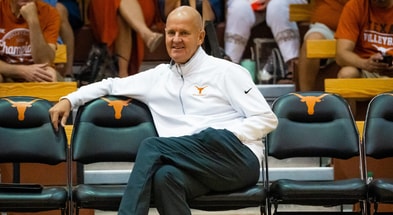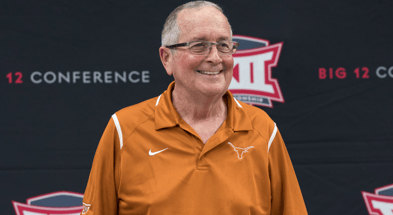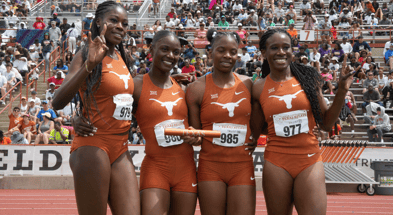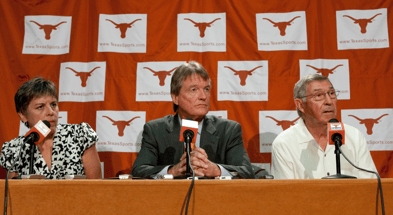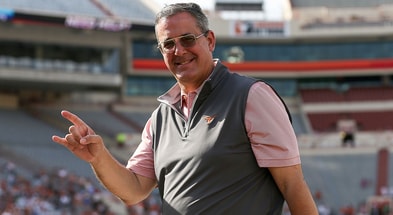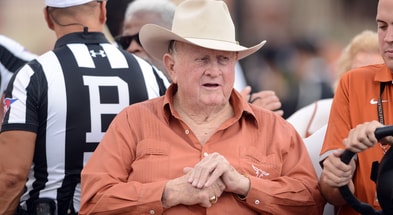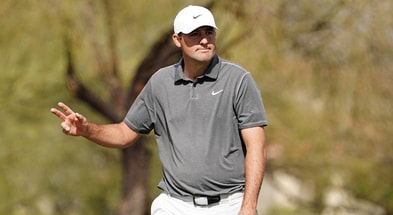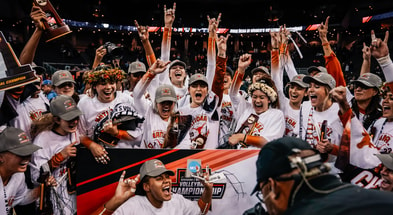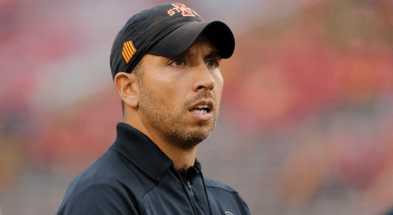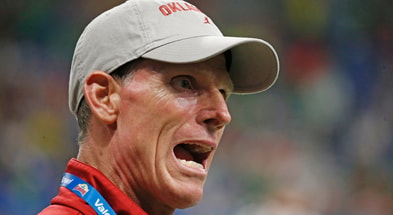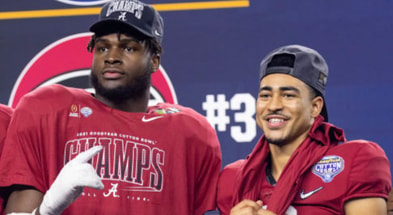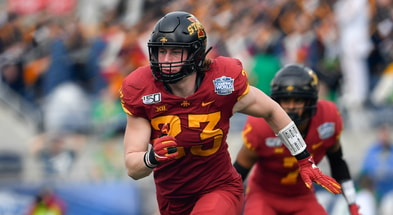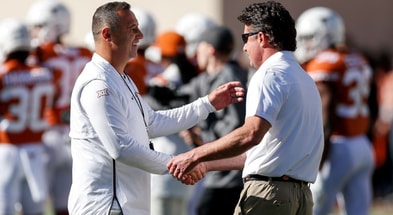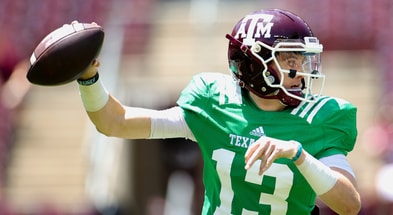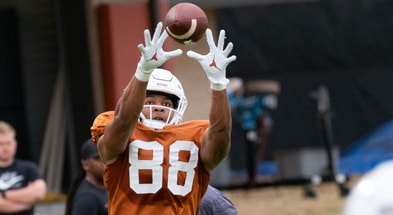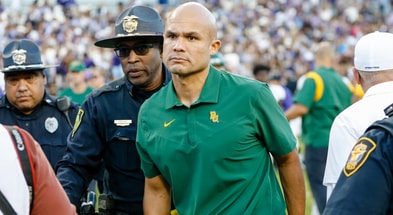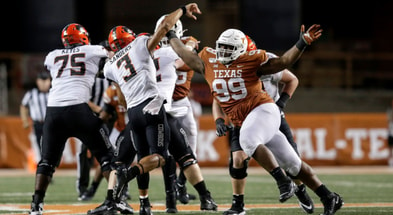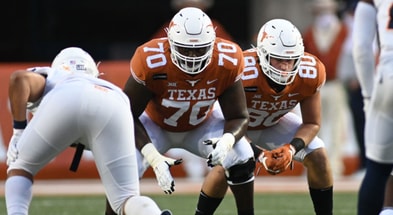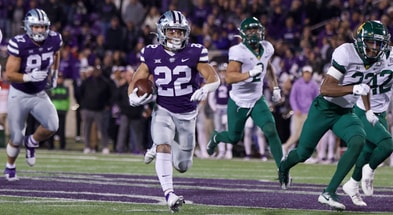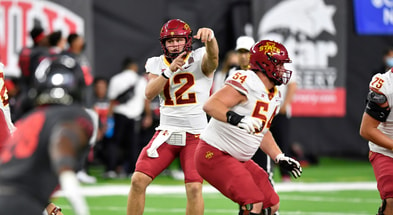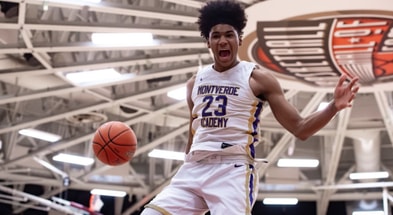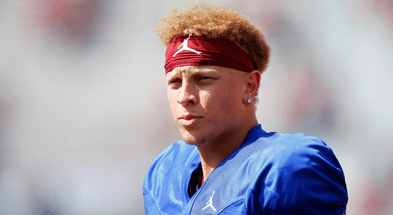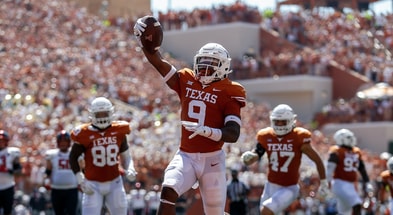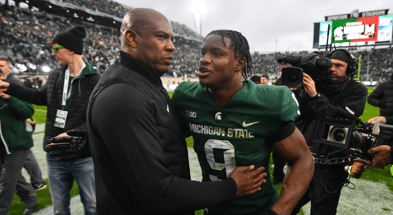Brent Venables' D-line challenges
The other day I created a stir among Sooner Twitter with the following comment:
I think the meaning here is pretty straightforward, although I’m often guilty of making connections in my mind that aren’t communicated (especially in 240 characters), but the comment wasn’t taken in good faith by many of the Oklahoma fans who engaged it.
The Alex Grinch defense was pretty unique and it always has been, dating back to his Washington State days when he put himself on the map with Hercules Mata’afa, a 252-pound defensive tackle. He’s always emphasizing speed and disruption across the defensive front rather than collecting big, powerful defensive tackles.
This was a helpful fit at Oklahoma, who’s home state is not overly loaded with massive and elite D-linemen. It also had obvious utility in the new NIL era where each team probably has to determine which positions to spend capital on and which ones to try and make do without the sorts of elite prospects who can command big figures.
The last time Venables was at Oklahoma they were able to stack some talent along the D-line, just as he did at Clemson, although not to the extent you see at Georgia, Alabama, or Texas A&M these days. Trying to do so right now when A&M is crushing it in D-line recruiting and Texas is an active battler in recruiting is pretty tough. Elite, 5-star D-linemen are in scarce supply in their preferred DFW areas and the ones who are there are also targeted by Texas, A&M, and SEC poachers from Georgia, Alabama, LSU, etc.
The advantage I saw for Grinch was in being able to focus recruiting effort$ on other positions as a result of utilizing a system which aimed to stock the D-line with athletic but smaller defenders. Judging by Clemson’s recruiting rankings across their roster, it would appear the empha$is was on quarterback, receiver, cornerback, left tackle, and D-line.
Venables does have some history of making do as a new hire before later upgrading his D-line recruiting to land more blue chip players. The 2000 Oklahoma Sooners are notable in this respect, they didn’t have many famous or particularly heralded prospects filling out their D-line, but they did have some speed and athleticism. The VERY next year they parlayed their early success (National Championship) into signing Tommie Harris, a dominant 5-star defensive tackle, and they’d go on to sign others as well such as Gerald McCoy and Jamarkus McFarland.
Initially Venables had to make do without. When he first arrived in Norman with Bob Stoops they were facing a resurgent recruiting machine in Austin lead by Mack Brown and then a notorious recruiting system in College Station managed by R.C. Slocum. It worked itself out, although they didn’t have to deal with National recruiting nor a looming move to the SEC.
Another interesting example that was thrown in my face when commenting on Venables’ preference for big game recruiting on the D-line was the 2019 Tigers. Now the 2019 Clemson defense was hardly an exception to the elite recruiting rule, they utilized three former blue chip recruits on their D-line, one of which was a 5-star. However, they also used a different strategy designed to help them overcome their inability (for one season) to play four great D-linemen. Brent Venables copied Iowa State’s defensive scheme and ran some 3-3-5, often with the “flyover” effect of using three deep safeties.
So if I’m right about Venables facing some obstacles to recruiting the sort of dominant D-line he wants, at least he has some familiarity with the challenges and background in making do with smaller athletes. How might this work out as a head coach at Oklahoma?
Venables’ immediate solutions for 2022
One of the first things Venables and his staff did was try to remake the roster some by adding a few additional players through the transfer portal to add more size. While Venables may enjoy using smaller athletes on the D-line, he typically likes to have at least one sturdy nose tackle in the mix and Grinch didn’t really use such players nor maintain any on the depth chart.
The main addition he made was Tulane tackle Jeffrey Johnson, a 6-foot-3, 300 pounder with a few years’ of experience in the art of how to survive a double-team without being driven backwards into the linebackers. The bowl game against Oregon made plain Oklahoma was lacking sturdy D-linemen who could hold the point of attack so he was an important addition.
With Johnson in the fold the apparent defensive front for OU is likely to include him, 6-foot-3/285 pound Jalen Redmond, and 6-foot-4/266 pound end Reggie Grimes. Weakside end has a few candidates such as Marcus Stripling and young blue chip Clayton Smith, the former has done little as a Sooner and the latter hasn’t either and is also a bit small still and may need more development. So while Venables has a glut of mid-sized defensive linemen with athleticism, he’s missing guys on the ends who are established edge-rushers.
What’s a coach to do? Well, the Big 12 has presented solutions to such issues before and Venables has taken note. The flyover defense tends to have the following positions:
- Defensive end (2): Ideally these guys can rush the edge but also play a 5-technique and get “heavy” into the B-gap or play a 4i-technique and start in the B-gap with a tackle on their outside shoulder. So in other words, you want true ends but big, strong ones. Ideally two strongside ends with pass-rushing ability, or two Ronnie Perkins/Isaiah Thomas types.
- Nose tackle: Standard nose position.
- Mike, Will, and Sam linebackers: The Mike is a normal inside linebacker position, the Sam is an apex player on the edge, a true 4-3 outside linebacker who can run but is protected by the 3-deep safety shell from anything overly taxing in coverage. The Will is similar to the Sam but plays in less space and is in the box a lot more.
- Cornerbacks: Their job can also be made much easier by having three safeties on the field to either help them inside or over the top or at least to give the appearance of doing so and thus protect them being targeted.
- Strong safety, middle safety, free safety: The strong safety is typically a hybrid, sometimes he’s essentially a nickel and other times he’s playing more like a field safety. The middle safety is also a hybrid, sometimes playing as a nickel, sometimes as a Tampa 2 Mike linebacker from depth (box safety), and other times playing deeper alignments on the hash or the deep post. The free safety is a typical boundary safety position.
If you have solid D-linemen, a multitude of versatile linebackers, and the depth at safety you can do a lot in this scheme to help everyone out and play to your strengths without exposing your weaknesses. The main preconditions would be a good nose, sturdy ends, either one End who can really rush or else good blitzing linebackers, and then plenty of veterans at safety.
Up front OU is in decent shape to check off those boxes. Reggie Grimes and Jalen Redmond is a good start at the end spots and Johnson is a solid nose even if the rest of the Sooner roster is a little suspect here. Linebacker is a big question mark but they have a lot of numbers and this position will receive special attention from Venables himself.
Safety might be the scariest part. Key Lawrence should grow into a good safety and they’re focusing Billy Bowman on learning this position as well, then the UNC transfer Trey Morrison is pretty good if you let him play downhill as a +1 type defender rather than allowing him to be isolated against a receiver. The flyover can help here.
Oklahoma could put together a flyover look like this:
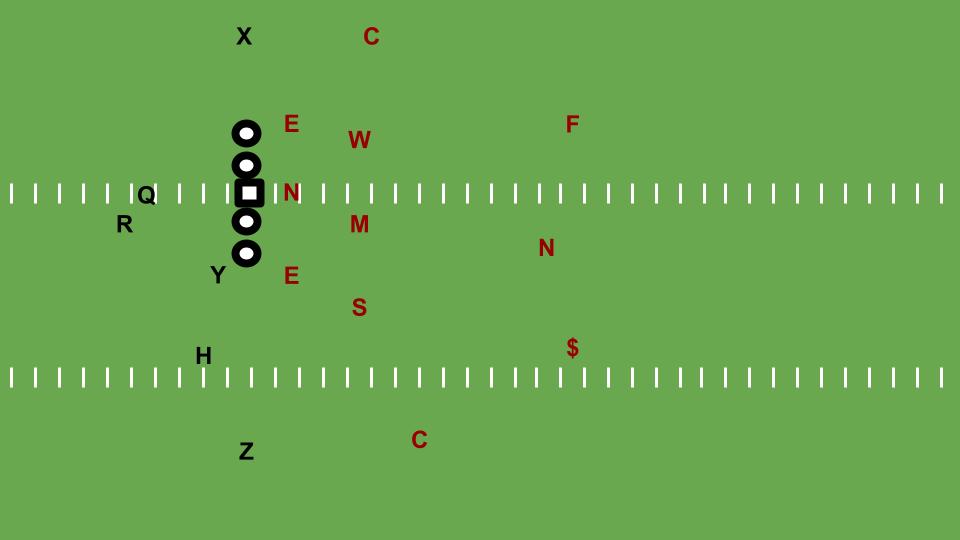
Boundary corner would go to whichever guy is most capable of holding up in man coverage, I’d guess Woodi Washington with D.J. Graham and C.J. Coldon battling for the field corner spot.
The field side defensive end would be Grimes, pushed by Ethan Downs. Boundary end would be Jalen Redmond backed up by Kevin Gilliam, nose tackle is Johnson and then Isaiah Coe or Jordan Kelley.
At linebacker, Dashaun White is your clear Mike, Danny Stutsman could play Will, and Sam is now a more feasible position to put a solid athlete like Shane Whitter or T.D. Roof while Jaren Kanak learns the ropes. Finally at safety I’d think Billy Bowman would be the strong safety given his experience at nickel in Grinch’s defense, Morrison would play the middle safety (N here), and Key Lawrence could play on the boundary as the free safety.
This is a very conservative look on defense and Iowa State used it very conservatively while making it famous. When Venables deployed it he was much more aggressive, regularly throwing in linebacker blitzes and moving the safeties all over the place. He has a reputation as a defensive play-caller who may or may not bolster his ability to anticipate offensive coordinators with sign-stealing and this look allows him to protect his retooling defense while still mixing in a lot of aggressiveness and multiplicity. So, I wouldn’t be shocked if we see a fair amount of the 3-3-5/flyover from OU next year unless Clayton Smith or Marcus Stripling are guys they just can’t keep off the field in a 4-down defense, perhaps even if they are.
Venables’ long-term solutions for the D-line
Oklahoma’s best defense under Brent Venables was probably the 2009 unit.
- Weakside end: Jeremy Beal, a 92.73 (4-star) recruit from DFW, Texas
- Defensive tackle: Gerald McCoy, a 99.37 (5-star) recruit from Oklahoma City.
- Nose tackle: Adrian Taylor, 85.56 (3-star) recruit from DFW, Texas.
- Strongside end: Auston English, a 85.56 (3-star) recruit from the Texas panhandle.
- Mike linebacker: Ryan Reynolds, a 97.97 (4-star) recruit from Las Vegas, Nevada.
- Will linebacker: Travis Lewis, a 87.81 (3-star) recruit from San Antonio, Texas.
- Sam linebacker: Keenan Clayton, a 97.29 (4-star) recruit from East Texas/DFW.
- Right cornerback: Dominique Franks, a 87.50 (3-star) recruit from Tulsa, Oklahoma.
- Free safety: Quinton Carter, a 86.22 (3-star) recruit from Las Vegas, Nevada.
- Strong safety: Sam Proctor, a 86.70 (3-star) recruit from Pearland, Texas.
- Left cornerback: Brian Jackson 3-star recruit from DFW, Texas.
The Sooners also had DeMarcus Granger, a 99.64 (5-star) recruit from Dallas, Texas, on the bench recovering from an injury. Otherwise they could have started him next to McCoy in 2009, although Adrian Taylor was also a good player.
This is a pretty good illustration of what a typical Venables defense over the last 20 years has tended to look like. He prizes speed at linebacker and will mold aggressive players from raw clay (although this unit included a pair of higher ranked guys in Reynolds and converted safety Keenan Clayton). In general, the defensive backfield wasn’t always rated too highly, but they played well together and Venables kept quarterbacks guessing and fielded nationally elite recruits across the defensive front.
Here’s the question, can Venables pull enough blue chip D-linemen from Oklahoma’s natural recruiting territory to allow them to field great, 4-down defenses? That task is getting more difficult in a few regards. In addition to the recruiting challenges, what was enough in the Big 12 in the 2000s or the ACC in the 2010s is not going to be the same as what they’ll need in the SEC in the 2020s. You need more depth to assert yourself as the top school in the conference week to week by your line play. Both Oklahoma and Clemson have made habits of dominating smaller conferences with SEC-esque defensive fronts their competition couldn’t match. Now they’ll need to face peers on a regular basis and still hold up.
Oklahoma’s “natural recruiting territory” is generally the state of Oklahoma and DFW. They’ve also historically been pretty good at going into East Texas, Central/South Texas, Nevada, Arizona, California, and St. Louis. All of those locales are reasonably close and don’t have big competitors (save for Texas). Oklahoma has tended to be at their best in recruiting or on the field when they can find smaller ponds to throw their weight around in.
The state of Oklahoma has more good players than you might think, although the top player in 2022 was 4-star defensive tackle Chris McClellan who signed with…Florida. DFW always has tons of players, including two blue chip defensive linemen in the 2022 class who signed with Georgia (DT Bear Alexander) and Ohio State (DE Omari Abor).
So here’s Oklahoma’s first challenge, they need to start winning battles on their home turf in an era of national recruiting where they have to fend off the likes of Ohio State, Georgia, Alabama, and Florida in addition to regional rivals Texas and Texas A&M. Then they probably also need to expand their footprint and establish a brand for fielding great D-linemen among some other areas. Lincoln Riley was successful in doing this for quarterback and wide receiver, but that’s honestly an easier task. Speaking of Riley, California is tough for D-linemen, there aren’t quite as many and the Trojans are probably going to be keen to aggressively drive off the Sooners when they try to get back into the Golden State.
They’ve focused more locally in 2023 with one key battle looming. That’s for defensive tackle David Hicks, a 5-star from DFW (Allen) who’s also a major target for Texas A&M. Then there’s a pair of Edges they’re after in Adepoju Adebawore from Kansas City and Bai Jobe from Norman, Oklahoma. Those are normally the sorts of recruits the Sooners can bully the locals (Kansas and Oklahoma State are the competition) out of the way to get.
Hicks would be a Tommie Harris-esque signing for Venables and his Sooner program. Otherwise, and perhaps regardless, he may need to major more heavily in alternative methods like the flyover defense to keep Oklahoma competitive in a new environment without overpowering defensive lines to anchor his units.
Does Oklahoma need creative solutions for fielding great defenses under Brent Venables or will he return them to their 2000s dominance? Discuss for free on the Flyover Football board!
